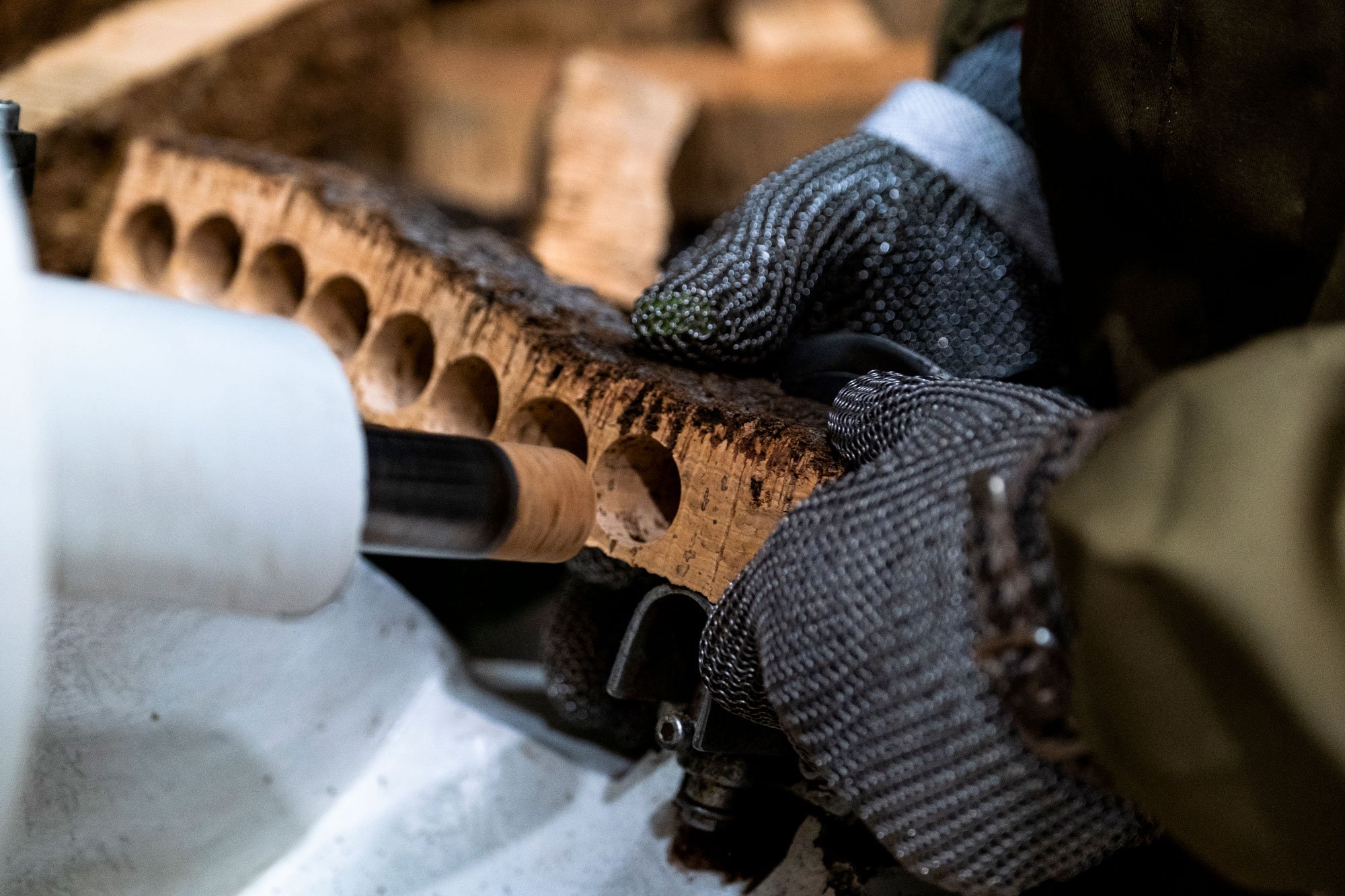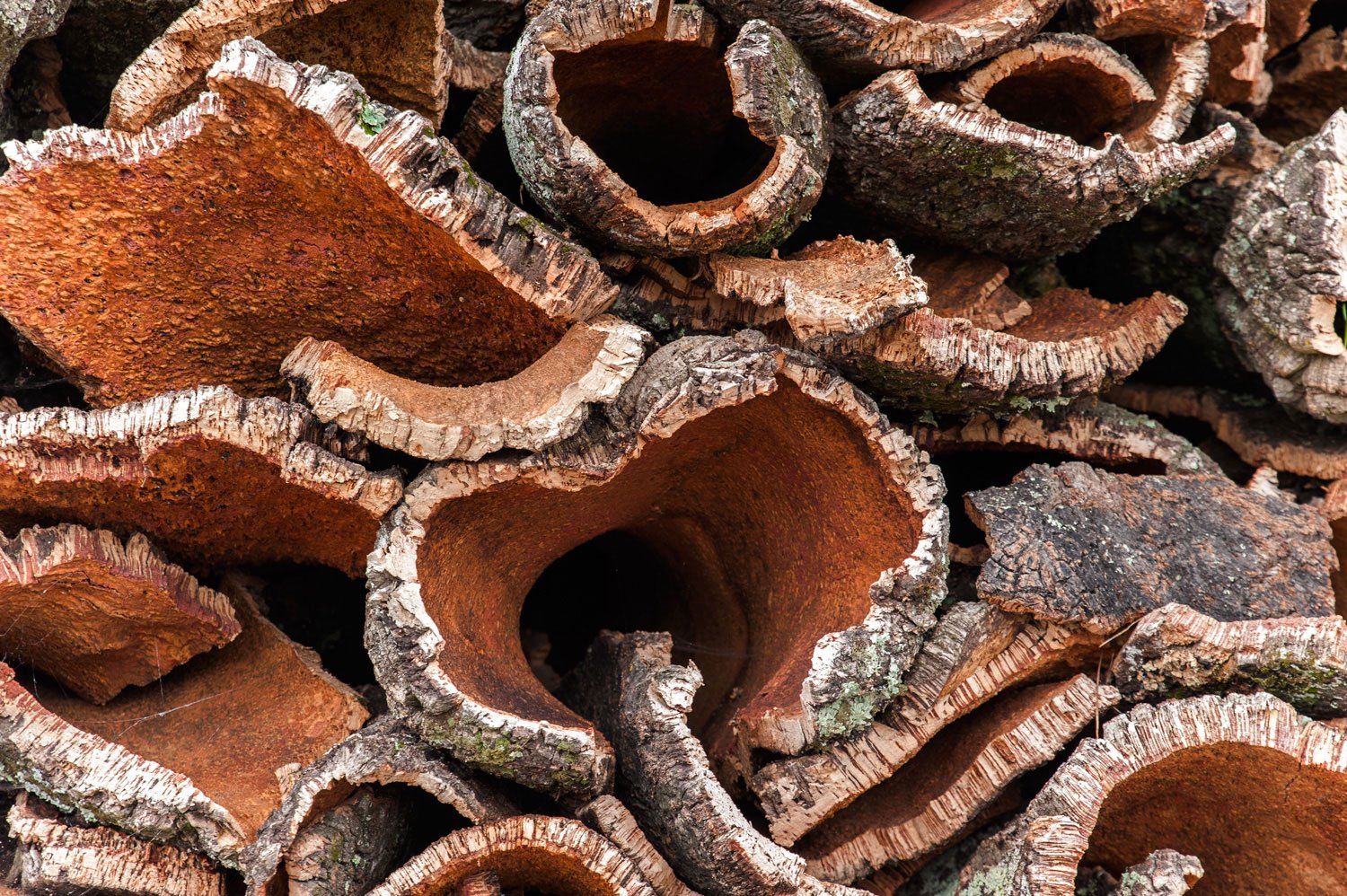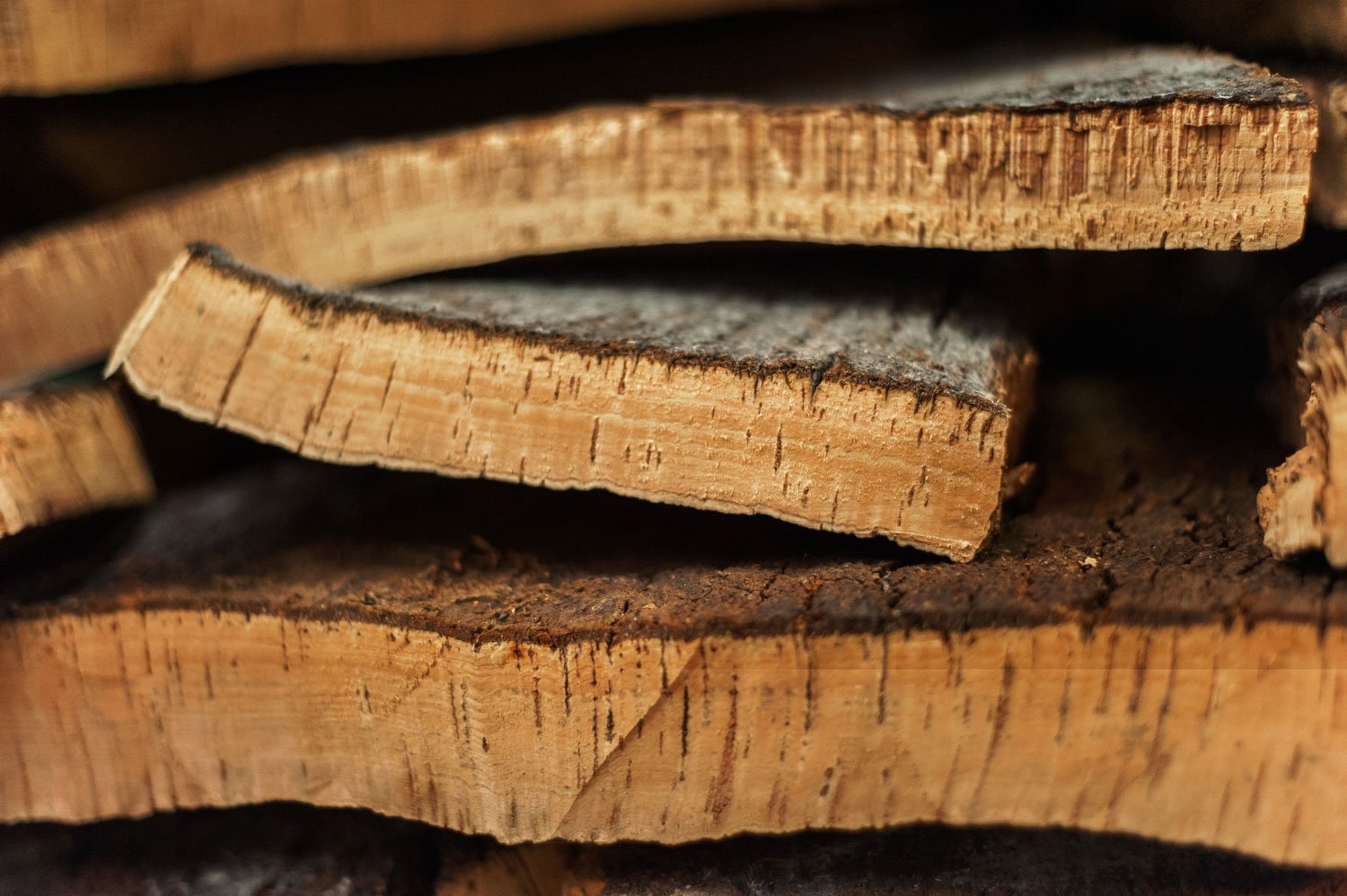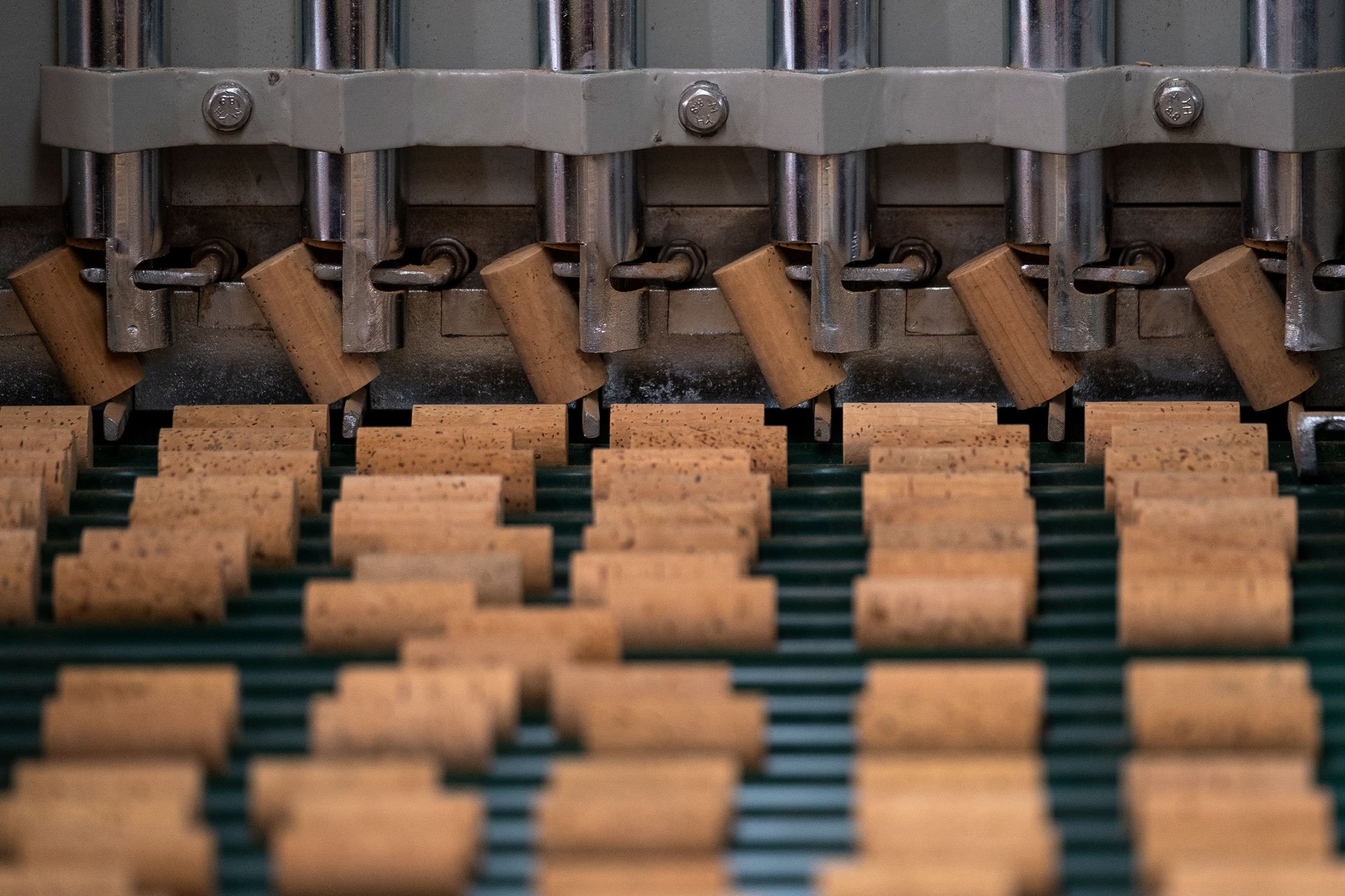
Cork Production Process
Unused cork, scrap and dust are collected for processing into other cork products such as insulation and construction materials. Nothing from the cork tree is wasted. Cork stoppers are graded and sorted by a number of criteria. Selected corks are washed and disinfected in a variety of methods. The most common method is washing the cork stoppers in a watery solution of hydrogen peroxide. New methods use microwaves or ozone to disinfect the corks.
After the final selection, the cork stoppers may be printed according to clients' specifications via roller marking, ink marking or traditional branding.




The production process starts when seasoned cork planks are stacked flat and boiled for at least one hour. Boiling allows individual cork cells to fully expand into a tight "honeycomb" cell structure. This makes the cork plank flatter, smoother, more pliable and causes the plank volume to expand by about 20%.
After the three-week resting period, the trimmed planks are sliced into strips along the length of the plank. Each strip is approximately as tall as the finished cork and a little deeper than the eventual cork width. The cork grain runs across the cork - not along its length.Corks are punched from the cork strips with a sharp, cylindrical knife. The knife determines the corks width. The height of the strip determines cork length.
